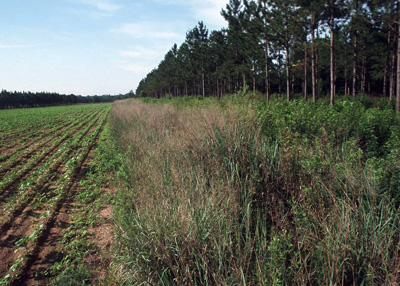|
|
 |
PAGE 30 / 102 |
 |
Unit 1: Basic Ecological Concepts and Principles Related to Agricultural Systems
Take-home Message for Agroecosystem Managers
 |
(Dot Paul, USDA NRCS) |
All farms and ranches can be viewed as a type of ecosystem. As such, they are organized, not chaotic, and have an inherent structure based on the interrelationships of the various species and populations within the system. An agroecosystem’s structure can be studied and described in terms of its component parts and the interactions that occur among and between the parts. In agroecosystems, crop plants, animals, weeds, insects and microorganisms interact with each other to varying degrees and with different impacts. Understanding these interactions allows agroecosystem managers to develop production practices that are cost effective and in keeping with sustainability goals.
Many farmers and ranchers feel that enhancing and managing the diversity of relationships within the ecosystem can reduce the need for external inputs, capitalize on the ecological processes that support the functioning of the agroecosystem and limit negative environmental impacts. A number of the key sustainable agriculture practices that we will be exploring in Unit 2 are related to this principle:
-
Crop rotation
-
Hedgerows and buffer strips
-
Integrating crops and livestock
-
Increased plant and habitat diversity for pest management
|